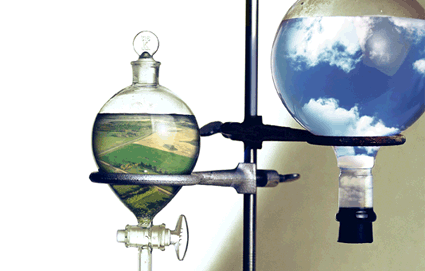Chemistry is key to solving climate change. Everything we already know about climate change, and all the progress we have made combatting it, can be attributed to our knowledge of chemistry.
We know what climate change is because scientists have sought to understand how greenhouse gases—namely CO2—interact with our atmosphere and oceans, but chemistry has also been essential to combatting it.
Chemistry has been used to improve the efficiency of our cars, for instance. According to the European Association for Chemical and Molecular Sciences, “New generations of automobiles consume considerably less fuel than those from just 2 decades ago.” This improvement is due to new chemical processes and formulas that further reduce emissions by ensuring less fuel goes to waste.

In addition to producing more fuel-efficient cars, scientists have worked to develop energy sources that cut out fossil fuels altogether. They aspire to address our dependence on fossil fuels by creating new, affordable technology that utilizes natural forces like the sun, wind, and water to generate energy. Still, as the climate crisis grows in severity the demand for new technology that can address climate change has increased.
Many scientists have proposed a solution called CO2 sequestration, which entails directly removing excess carbon from the atmosphere to store it someplace, such as underground. By artificially replicating what plants naturally do when they photosynthesize, scientists may be able to further combat climate change.

Armed with extensive knowledge of chemistry, we can choose what molecules best react with CO2, capture it, and store it away or use it to make other materials, such as metal. This is why some scientists have suggested putting iron into the oceans or using mineral compounds that react with carbon dioxide. Although, such solutions are controversial because they alter fragile ecosystems.
Regardless, increasing our knowledge of how CO2 and greenhouse gases react to our environment has proven beneficial in combatting climate change and further research may allow us to develop new solutions and technologies that address it.
Sources and More Information
Understanding the links between chemistry and climate change
Iron oxides as efficient sorbents for CO2 capture
